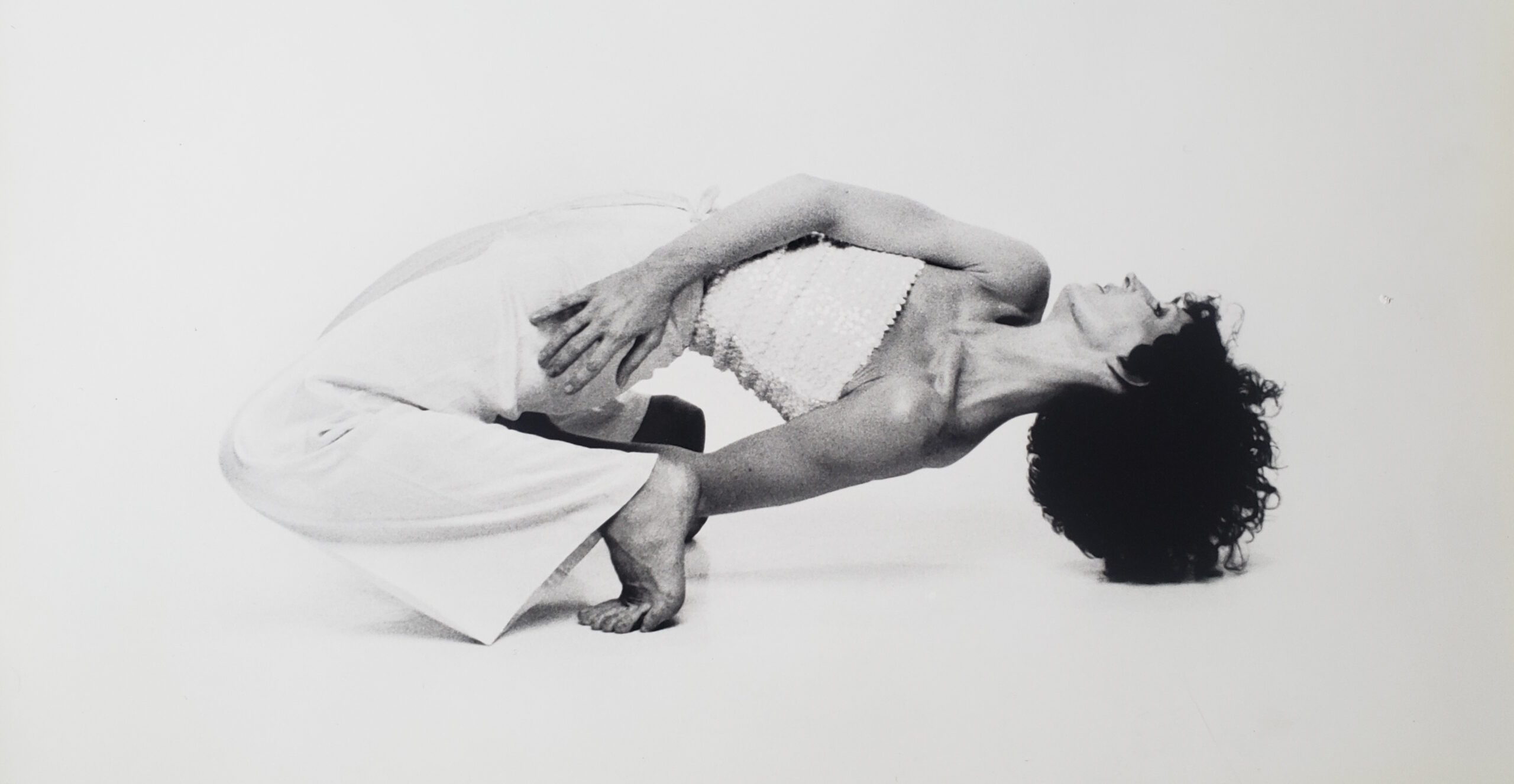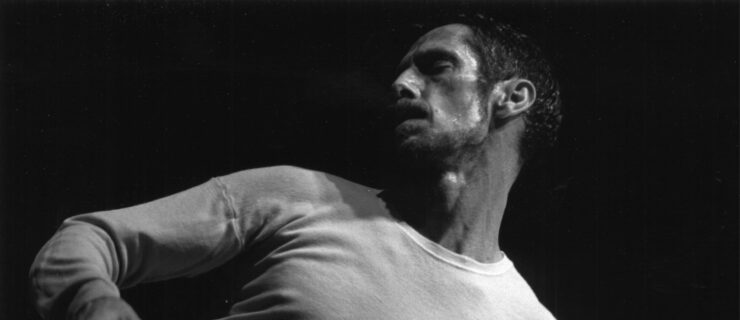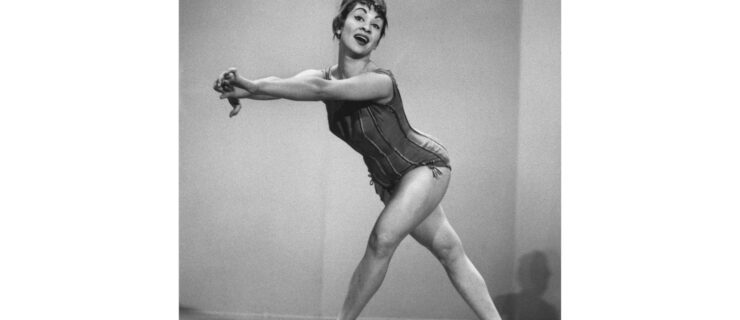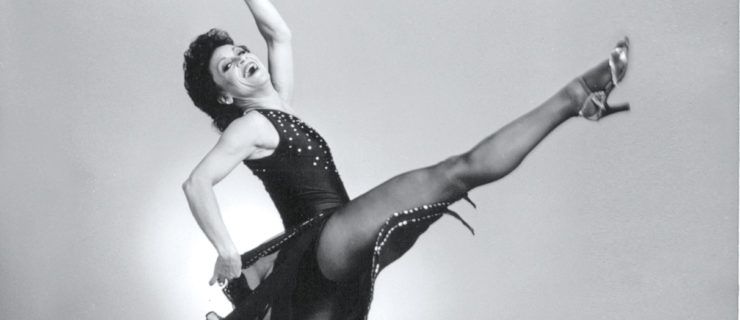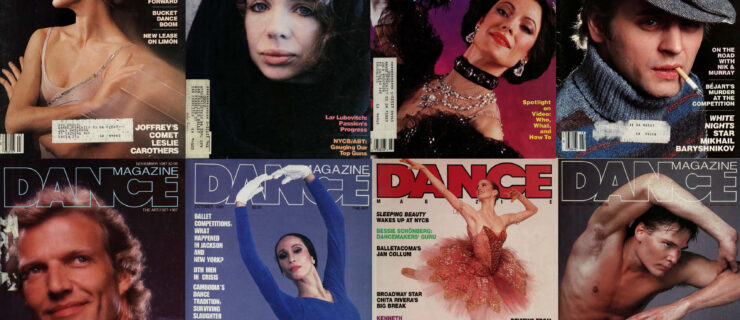Remembering the Creative, Resilient Spirit of Jennifer Muller (1944–2023)
“Change!”
It is the one word spoken throughout choreographer, dancer, and teacher Jennifer Muller’s iconic work Speeds, a dance celebrating joy rooted within virtuosic and pedestrian movements.
Where is the point of change? Muller would often incorporate this question into her technique classes to ask the dancers to clarify their internal awareness within each movement.
Amidst the constant changes of life (including losing friends, colleagues, and dancers during the AIDS crisis in the 1980s and ’90s), Muller remained fiercely devoted to dance. “No matter what will happen, this is my life,” Muller said in a 2018 interview. “Dance is what I do and I’ll keep doing it until I can’t do it anymore.”
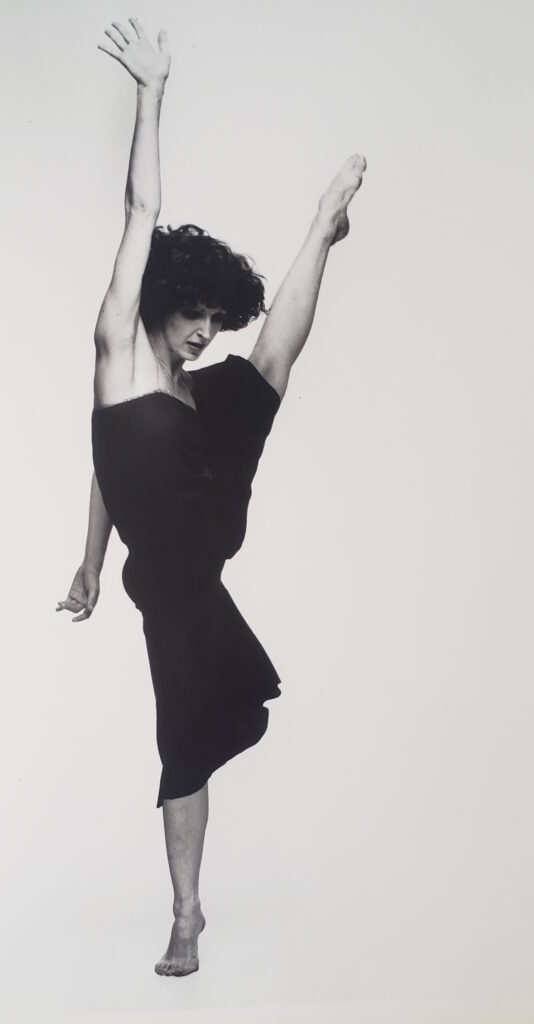
Muller passed away on March 29, 2023, due to natural causes at her home in Jersey City, New Jersey. She was 78 years old. Although she has no immediate survivors, she leaves an extended family of dancers and audiences who were profoundly impacted by her work.
Born in Yonkers, New York, on October 16, 1944, Muller began creating dances as a child. Muller’s parents divorced early on, and her TV-director father, Donald Muller, known professionally as Don Medford, was not present in her life. Her mother, Lynette Heldman Muller, was a teacher at the Halsted School, where she directed theater and dance productions. Post-retirement, she worked by her daughter’s side, tackling administrative duties for Muller’s company, Jennifer Muller/The Works.
Eight-year-old Muller began formal dance training at the Juilliard School Preparatory Division. She studied ballet with Alfredo Corvino (who was later ballet master for Pina Bausch) and modern with Pearl Lang, who brought Muller into her company when she was 15. Muller then attended The Juilliard School proper and in 1963, after her first year, she was invited into José Limón’s company.
Muller performed with the Limón company during a five-month tour throughout Asia. Then 18 years old, she began reading Eastern philosophies like the Tao Te Ching and I Ching voraciously, igniting the creation of Muller Polarity Technique. “I started my technique from the influence of that tour. It changed my life,” she described in an interview for Tanzplan Germany’s Dance Techniques 2010 textbook. Through visualizing molecular changes of energy, Muller found she could “replace tension with energy” to tap into expressive freedom.
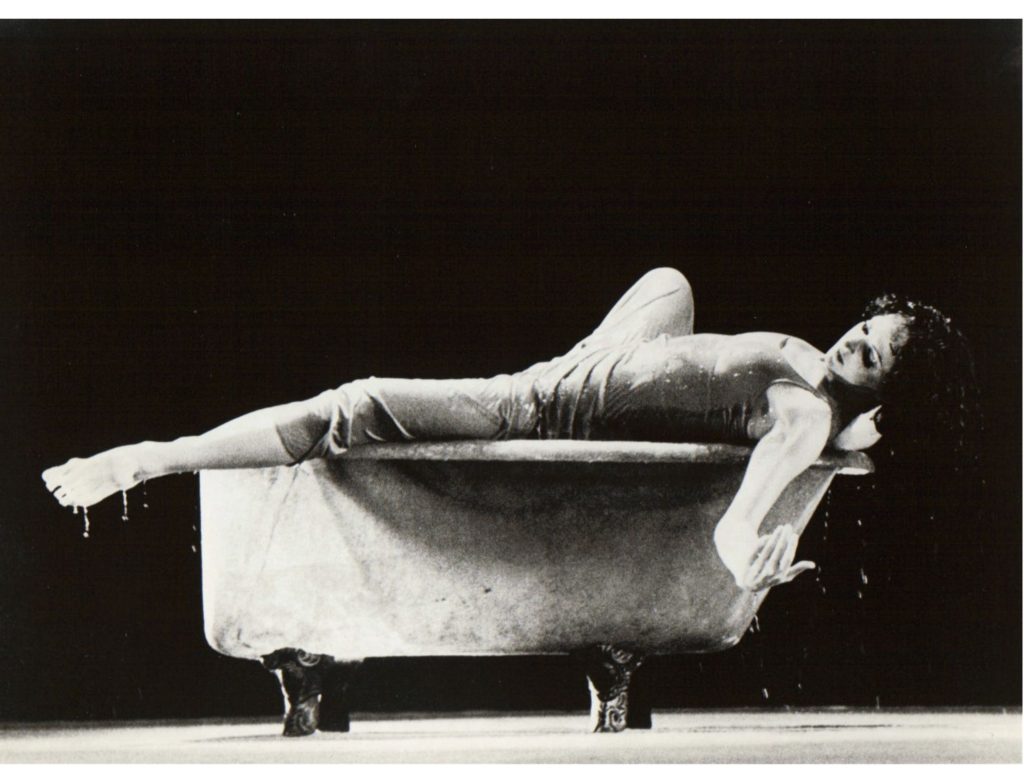
In 1967, while still performing with Limón, she and celebrated dance partner Louis Falco began creating work for the Louis Falco Company, where she was associate artistic director and dancer from 1968 to 1974. In a 2011 conversation at the University of California Santa Barbara between Muller and Wendy Perron, then the editor in chief of Dance Magazine, Muller divulged that the two emerging choreographers had once hoped that Limón would become their patron. In 1971, Muller and Falco invited Limón to their 24th Street studio to see their new work The Sleepers, which incorporated spoken word. According to Muller, Limón was so disturbed by the piece that he shouted his disapproval at her and stormed out. Muller’s tenure with Limón ended that year.
But Muller and Falco wanted to create dances with real people onstage rather than mythic or historical characters. Their seminal work infused extraordinarily technical dancing with pedestrian ease and human stories, a style Muller considered contemporary rather than modern or postmodern. To further establish her artistic voice on her own terms, she and Falco parted in 1974 but remained close, and that year she founded Jennifer Muller/The Works. “I needed a title that leaves room to do different things,” she told The New York Times in 1986. “The reverberations of a multidimensional name fascinated me.”
The company met with vibrant success, and Muller was featured on the cover of Dance Magazine in 1978. In a 1983 New York Times feature, Jill Silverman wrote: “In her rehearsals or on stage, there is a keen attention to energy, extension and kinetic play. Demonstrating a section of new work to her company, Miss Muller’s body falls at one moment into a breathy swing, head and chest thrust back, throat exposed, arms sweeping over head. Then her torso ricochets over some invisible obstacle, traveling further into a dipping turn. These airborne yet grounded movements create momentum in the choreography, which clearly contributes to the company’s reputation for technical bravura coupled with infectious spirit.”
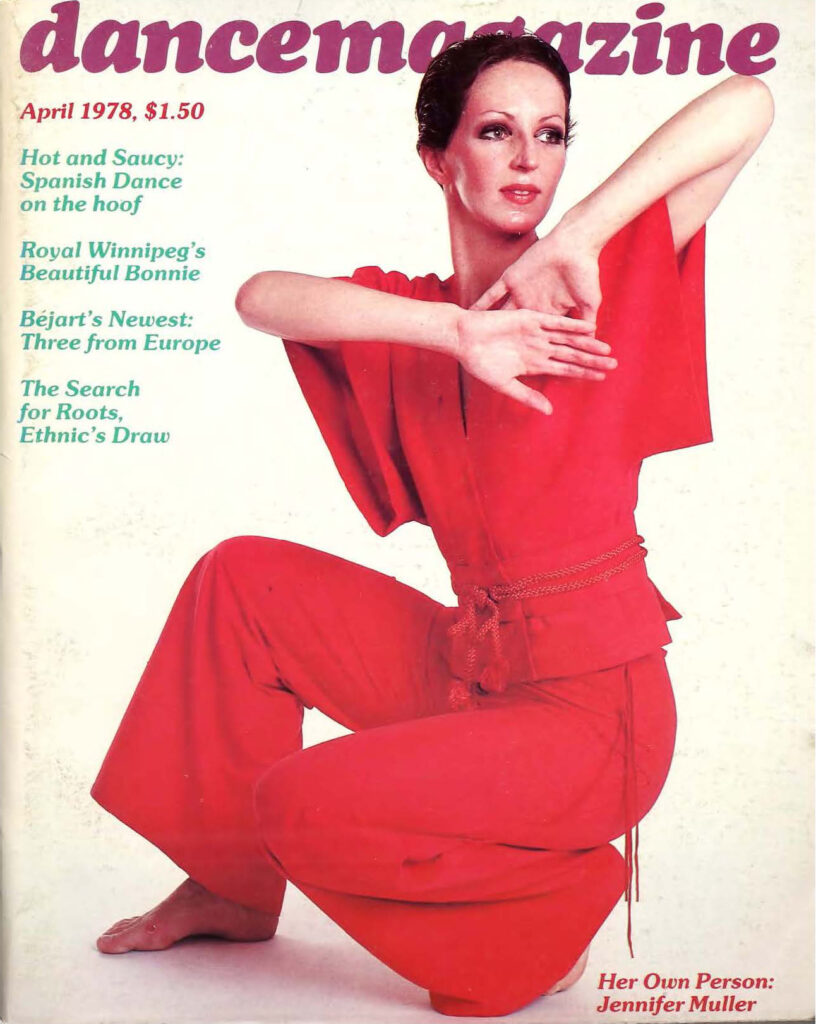
Muller was known for her entrepreneurial tenacity, taking on tasks from lighting, costume design, and writing scripts to fundraising, producing, and public speaking. She fought to gain recognition and be taken seriously as a woman and leader in the field; looking to build a sense of community among female choreographers, during the last 10 years of her life she founded the Women/Create! festival.
During the 1970s and ’80s, JMTW toured extensively throughout Europe, Asia, and North, Central, and South America; thanks to generous government funding, it toured more than any other American dance company in 1981. In the nearly 50-year history of the company, it performed in 39 countries and 30 American states. For its New York City seasons, the company performed at New York City Center and, later, The Joyce Theater and New York Live Arts.
Muller choreographed over 125 pieces and seven evening-length works, integrating a broad spectrum of dance and theater elements. A trailblazer of dance theater, she put a bathtub filled with water onstage in Tub (1971); devised a fully functioning bathroom and kitchen for the set of Strangers (1975), commissioned by Nederlands Dans Theater; and covered the stage in beach chairs, balls, and towels in Beach (1976). She thrived through collaborations, working with composer Burt Alcantara for over a decade and choreographing Interrupted River (1987) with a score by Yoko Ono and scenic design by artist Keith Haring. She regularly worked with Tony Award–winning lighting designer Jeff Croiter. Alvin Ailey commissioned her to create Crossword (1977) on his company, and in 1985 invited her to restage her Speeds. Judith Jamison later commissioned Footprints for Alvin Ailey American Dance Theater’s 2003 season.

Yet her joyful motivator was creating new work with her company and teaching. JMTW had a daily two-hour class that was open to outside dancers, and it offered a scholarship program for dancers desiring to train for a longer period. Many company members, including myself, began as “schollies.” Muller taught with unabashed humor while demanding excellence. Despite the financial hardships and realities of running a dance company, her daily work with the dancers refueled her spirit.
Muller was extremely generous with her loft studio, which doubled as her personal home during the early years. “Everyone comes in and recognizes the warmth, the community, the good feeling of the space,” Muller told me during an interview for my MFA thesis in 2019. Beginning in 1997, she opened the studio to the dance community through the HATCH Presenting Series, an informal, cost-free showing for both emerging and established choreographers to present work.
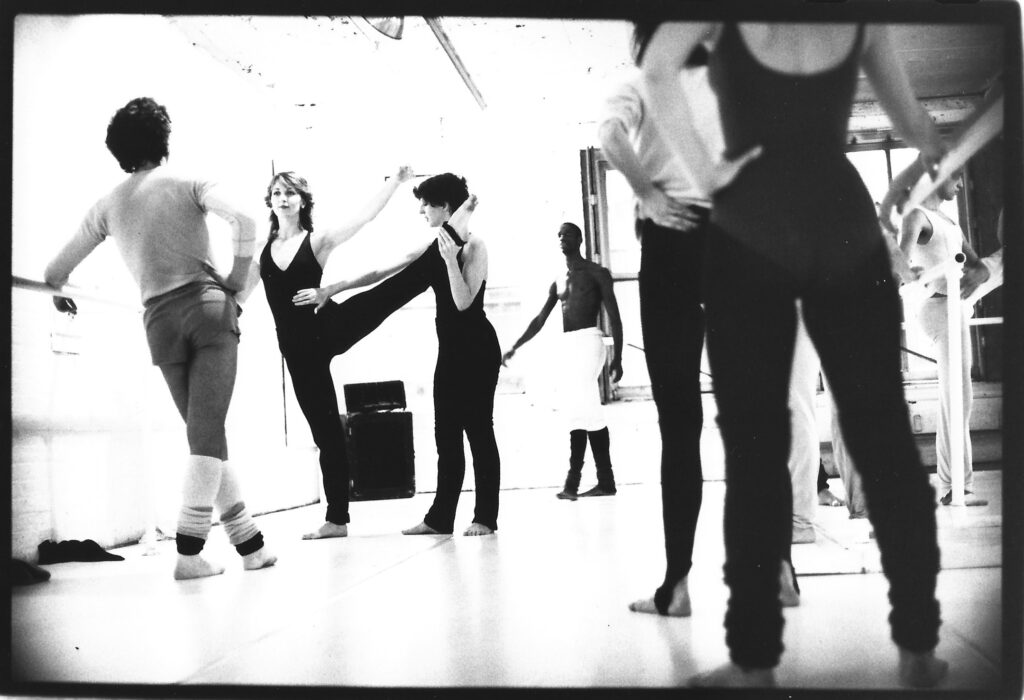
Muller inspired generations of dancers and left a significant imprint across dance and theater. Many JMTW dancers went on to form companies, direct, and teach in universities and professional studios, including Ronald K. Brown, Ed Burgess, Mario Bermudez Gil, Angeline Wolf Gloria, Lana Carroll Heylock, Michael Jahoda, Courtney D. Jones, Young Soon Kim, Leda Meredith, Maria Naidu, Christopher Pilafian, and Pascal Rekoert. John Brooks, who danced with JMTW beginning in 1983 and served as artistic council to the company until her passing, remembers his close friend as a doer. “She was the catalyst,” Brooks says. “Her ability was to make things happen and motivate those of us around her.”
In a 2005 Juilliard Centennial Magazine interview, Muller shared insights regarding the power of the arts to inspire real change: “Between the polarity of creation and destruction—the beginning and the end that brackets all human existence—the arts are the epitome of the creative spirit. As the reflective soul of our society, they lead toward resolving conflict in the world by the depth of their perception of the human condition.”
Plans for a memorial celebration are tentatively scheduled for fall 2023. Details and updates will be posted on the company’s website and social media.
